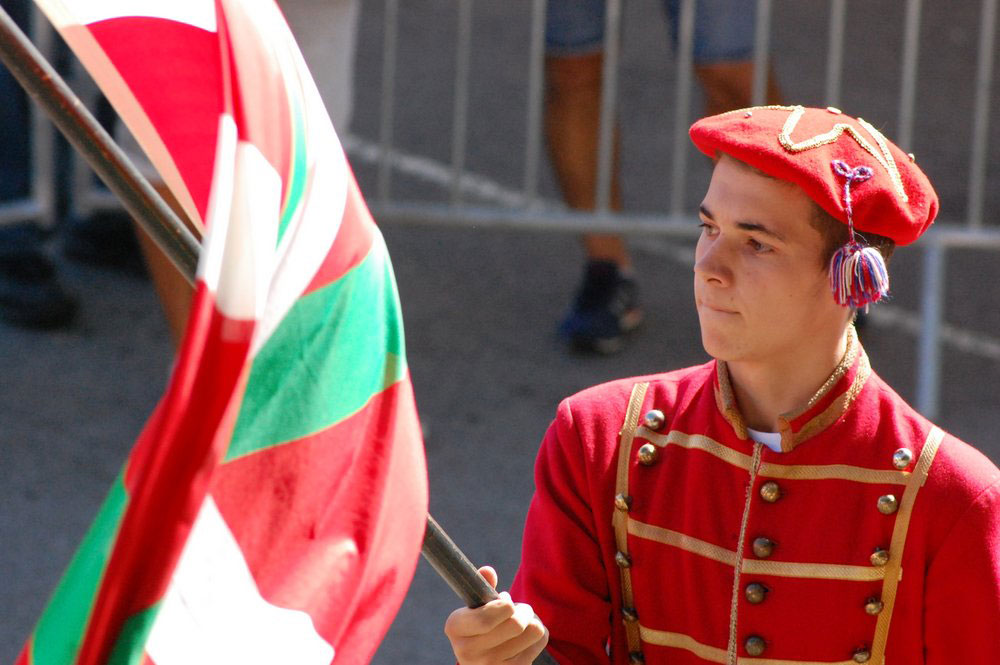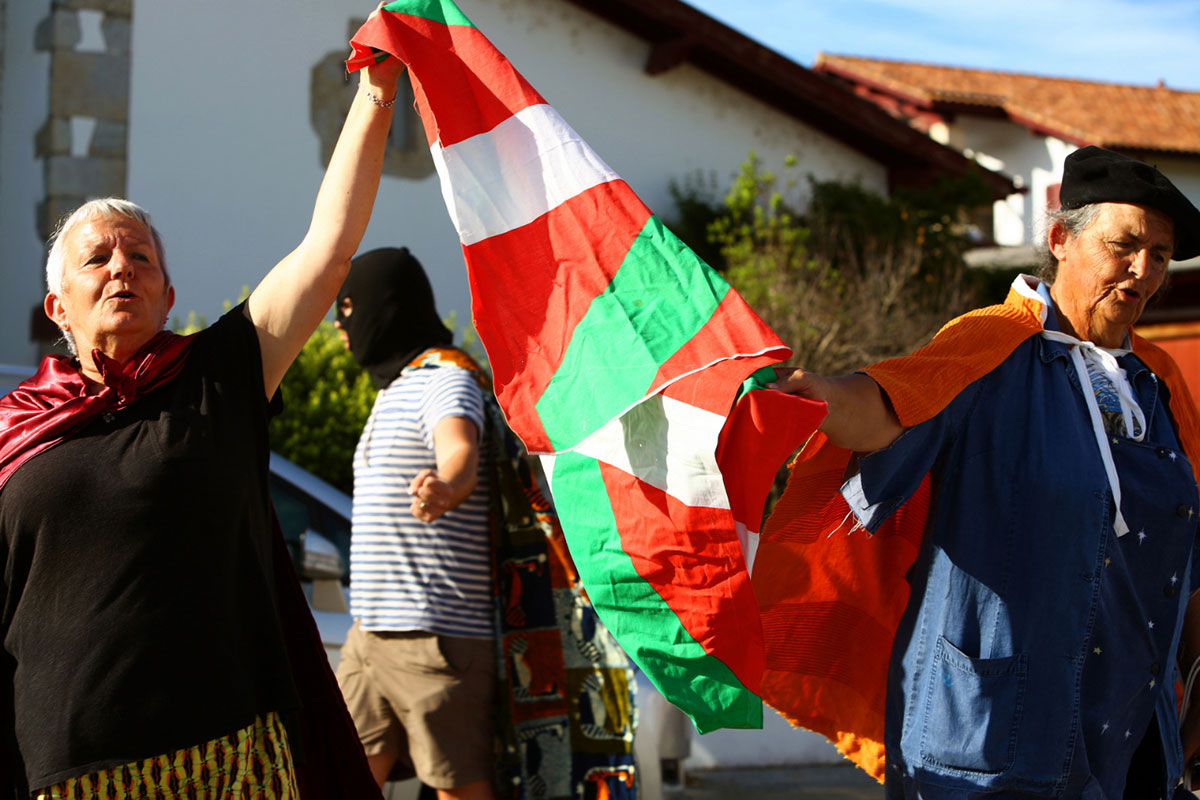Whenever I have friends around who’ve never been to the Basque Country before, they always ask what the Basque flag is.
If you’ve been on a trip to the Basque Country, it’s likely that you’ll have seen the red, green and white flag dotted around in various places and wondered what it is too.
Whilst the Basque flag (or ikurrina as it’s called in Basque) doesn’t represent a nation-state, it does serve as an important symbol for the Basque Country.
In this guide, we’ll run through a little about the Basque flag, its origins, history and meaning.
About the Basque Flag
The Basque flag represents so much for the people of the Basque country. It’s difficult to put into words how much it means, and the sense of pride that pours from the flag.
Not only does the flag represent the people of the Basque Country, it also represents what they have endured. They are a proud population and the flag represents their culture, land, history and sense of identity.
The Ikurrina is used throughout Euskadi. Even the football teams from the Basque Country have adopted the flag on their football shirts.
Below we’ll run through a little bit more about the origins of the flag and its design.
1. The origins of the Basque flag
The Basuqe flag was created by Sabino Arana and his brother Luis Arana in 1894.
Originally, the Ikurriña was meant to be a flag for the Bizkaia region (where Bilbao is located) of the Basque Country. However, the Basque Nationalist Party adopted the Ikurriña as their flag shortly after it was unveiled in 1895.
The flag became very popular and was adopted by the rest of the Basque regions, widely accepted as a flag for the whole of the Basque Country.
It wasn’t until 1936 when the Basque Autonomous Government was formed that the flag was officially, declared by law, the Basque flag.
2. The colours of the flag

The meaning behind the colours of the Basque flag is a topic of debate.
Whilst It isn’t 100% clear or agreed as to what they stand for, there’s a general consensus that they are related to the below, with some references back to religion.
- Red – Historically the Bizkaia flag was red, so the red background is said to relate to Bizkaia, the region for which the flag was originally created. Others have argued that the red represents the whole of Euskadi, or even the blood that the Basque people are willing to shed for their land.
- Green – The green St Andrews cross in the Basque flag is said to portray the independence of the Basque Country. It’s said to represent the oak tree of Gernika which is the symbol for Basque freedom.
- White – There’s a little more agreement on the white in the Basque flag, which commonly represents God and the Catholic faith.
3. History of the Basque flag
The Basque Country (and the Basque flag) have gone through some hard times over the years.
After the Spanish War, the Ikurriña was actually declared a separatist symbol and made illegal by the Spanish dictatorship.
This was a number of measures the Spanish dictator Franco brought into practice which sought to repress the Basque Country. This included banning people from speaking, and making it illegal to broadcast in Euskara (the Basque language).
However, in 1977, the Basque flag was declared again by law after the end of the Spanish dictatorship and the approval of the Basque autonomy.
FAQs about the Basque flag
We’ve tackled some of the most frequently asked questions about everything related to the Basque flag below.
If you have a question that we haven’t tackled, feel free to ask away in the comments section.
The Bizkaia region and the United Kingdom have always had close ties and heavy influences with trade.
It’s said that the Basque flag is deliberately modelled on the British flag for that reason.
The Basuqe flag is called the Ikurrina, in Basque (or ikurriña in Spanish).
The meaning of ikurrina in Euskara is “flag”, but it only refers to the Basque flag, not any other flag.
